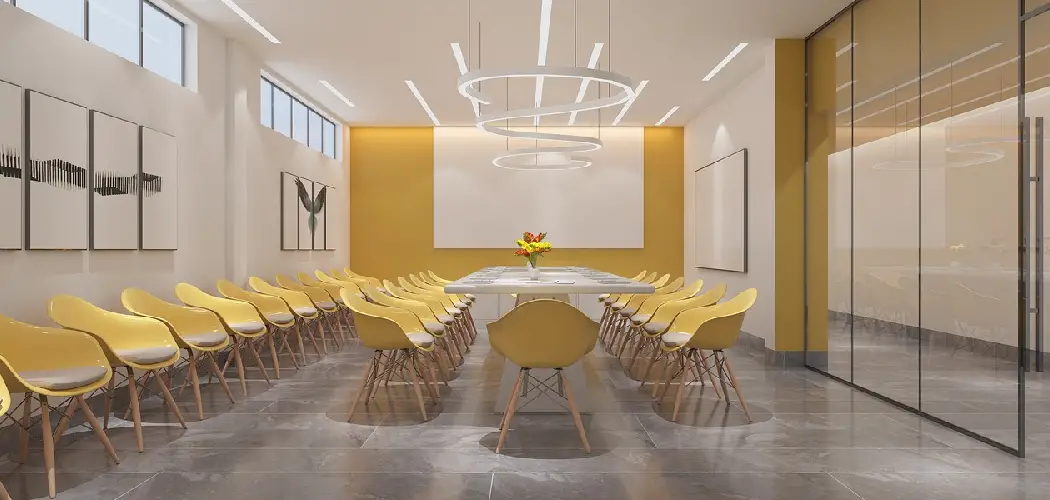Are you tired of staring at bland walls and uninspiring cubicles in your office space? Do you want to inject some life and personality into your workplace? Look no further! In this article, we will explore the exciting world of office space decoration and provide you with expert tips on how to decorate office space into a vibrant and inspiring environment.
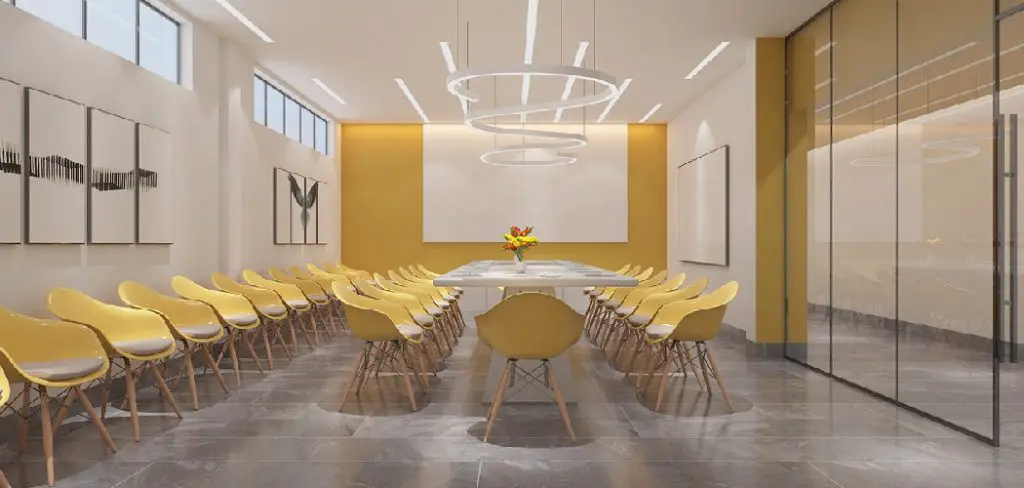
From choosing the right color schemes and furniture arrangements to incorporating plants, artwork, and accessories, we will guide you through the process of creating an office space that is not only aesthetically pleasing but also conducive to productivity and well-being.
Whether you work in a traditional office setting or a trendy coworking space, this article is packed with practical advice and creative ideas to help you maximize the potential of your workspace. Get ready to unleash your inner designer and revitalize your office space like never before!
The Importance of a Well-Designed Office Space
A professional and well-designed office space is essential for any workplace. Not only does it promote a sense of pride and productivity, but it also has the potential to encourage collaboration and improve employee morale.
A well-decorated office can make a lasting impression on both employees and clients alike, which makes it essential to pay attention to details.
When considering how to decorate office space, it is important to consider the potential impact on staff and visitors alike. For example, colors can be used strategically in order to create a bright and cheerful atmosphere that can energize employees as well as help them concentrate better. Additionally, items such as plants and artwork can also add life to the office while providing an inviting atmosphere.
It is also important to create a comfortable environment in order to maximize productivity and encourage collaboration. Furniture, layout, and ergonomic considerations are all essential components of creating a well-designed office space that encourages efficiency and creativity. Furthermore, it is important to ensure the office space accommodates different types of work tasks, such as individual work and group meetings.
Challenges and Considerations of Decorating a Small Office
When decorating a small office space, it is important to consider the challenges and limitations of the area. Without careful consideration, a small office can appear cluttered, cramped, and overwhelming. Here are some tips to keep in mind when decorating a small office space:
1. Maximize the Available Space:
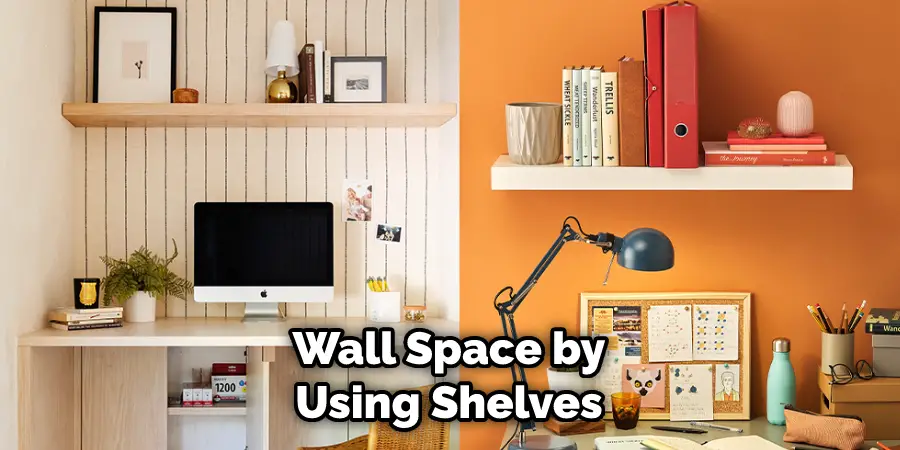
When decorating a small office, it’s important to make sure that all the necessary furniture and equipment fits neatly into the area. This means utilizing wall space by using shelves, hanging art and other items off walls, deep shelving units, repurposed furnishing pieces, and minimizing cluttered surfaces.
2. Use Multi-Functional Furniture:
Another important consideration is making sure to have furniture that serves multiple functions. For example, a desk with drawers underneath can offer both organizational and seating space. Alternatively, an armchair that doubles as storage can be both stylish and practical.
3. Use Bright and Neutral Colors:
Utilizing bright and neutral colors is also beneficial to make a small office appear more spacious. Incorporating colors such as white, gray, and beige can make small areas feel larger than they actually are.
Additionally, strategic use of colors can create the illusion of more space by adding visual interest to your office while still keeping it light and airy.
4. Utilize Natural Light:
Using natural lighting is also important to set the mood of a small office. Letting natural light into the room can make it appear larger and more bright. To make use of natural light, installing sheer curtains or blinds on windows can help diffuse the light while still allowing it to pour in and illuminate your space.
By keeping these tips in mind, you can transform a small office space into a stylish and productive area. With careful consideration of the space’s challenges and limitations, you can create an inviting and well-designed office that looks great while still being practical.
10 Methods How to Decorate Office Space
1. Assess Your Space:
Before starting any decorating project, it is important to assess the available space, including its size, layout, and existing features. This will help you identify the functional requirements and design direction for your office.
Consider the amount of storage, seating, and desk space you need to maximize your productivity. If there are windows in the office, consider how much light is available and strategize ways to make use of the natural lighting.
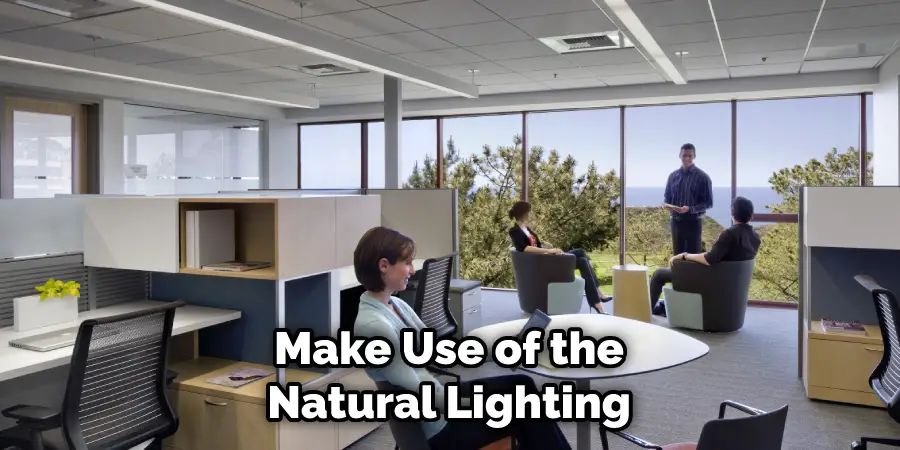
It’s also important to account for any areas where you will need more privacy and to create a workspace that is comfortable and inviting. While decorating your office, try to think of ways to make the most out of the available space.
2. Set a Design Direction:
Once you have assessed your space, it is important to define the desired ambiance and atmosphere. This will depend on the office’s primary purpose, target audience, and your personal preferences.
Selecting a suitable design style, such as modern and minimalistic, industrial and rustic, vibrant and creative, or sophisticated and professional, can help guide your decorating decisions.
It is also important to consider the colors, textures, and fabrics that will be used throughout the space. These details can help create a cohesive look and feel that reflects the office purpose and speaks to its target audience.
3. Optimize Furniture Placement:
Choosing the right furniture and placing it in the most efficient way can help maximize the available space and create an optimal workflow. Prioritize multi-functional and space-saving pieces and arrange them for easy access and movement.
For example, a standing desk can be a great option for productivity and comfort. If you have to purchase new furniture, consider the ergonomics of the pieces and make sure that they complement the overall design of your office.
Place furniture defines open space for collaboration or creates private areas of concentration. However, make sure that the pieces fit your office layout and aesthetic. There is no wrong or right when it comes to furniture placement. Experimentation is key, but don’t forget practicality!
4. Maximize Storage Solutions:
Efficient storage solutions can help reduce clutter, improve organization, and create a clean and tidy look. Consider utilizing vertical space through shelves and wall-mounted storage, as well as digital storage solutions for files and documents.
Investing in the right storage will help you keep your space organized and make it a productive work environment. Additionally, baskets and bins can be used to store items that don’t necessarily have to be displayed.
To further open up the space, keep just a few essential items on your desk. This will help create a clear and spacious look. Lastly, choose stylish yet functional storage solutions to add a touch of personality to your office space. Although storage is important, it doesn’t have to be boring.
5. Enhance Lighting and Colors:
Lighting and color can have a significant impact on mood, productivity, and creativity. Maximizing natural light, incorporating artificial lighting, and choosing appropriate color schemes can help create a comfortable and inspiring workspace.
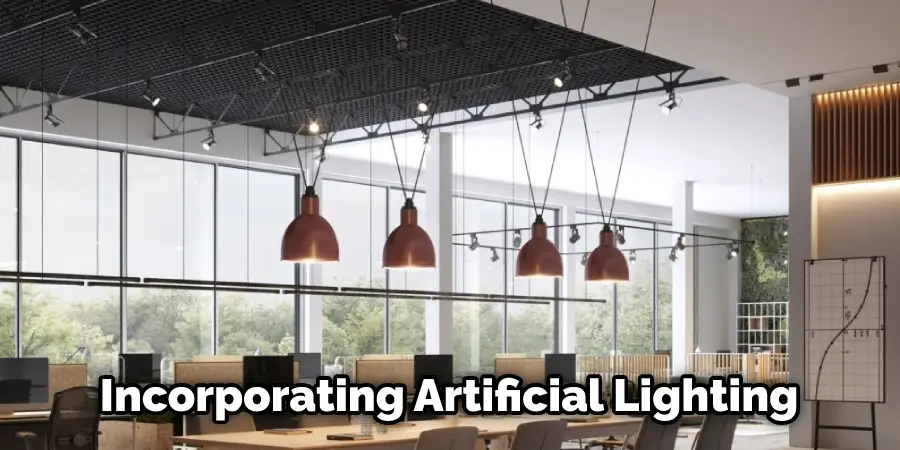
If possible, bring in as much natural light as you can. Consider replacing older windows with larger ones that let in more natural light or adding windows to dark areas. You can also upgrade your lighting fixtures or add light-diffusing shades to reduce glare and soften shadows.
6. Create an Organized and Clutter-Free Environment:
A cluttered and disorganized workspace can lead to stress, distraction, and decreased productivity. Establishing an effective filing system, decluttering regularly, and implementing a paperless approach can help create a clean and organized environment.
If you need to store physical documents, consider investing in filing cabinets or storage units. Make sure they are labeled and easy to access. Additionally, setting up a digital filing system can help you keep your computer desktop, emails, and documents organized.
This will make it easier to find the information you need quickly and efficiently. Finally, be sure to clean up your workspace before leaving for the day so you can start each day with a clear mind and organized space.
7. Incorporate Ergonomic Considerations:
Proper ergonomics can help reduce physical strain and improve comfort, health, and productivity. Choosing ergonomic office furniture, ensuring proper desk and chair heights, and promoting healthy posture can make a significant difference.
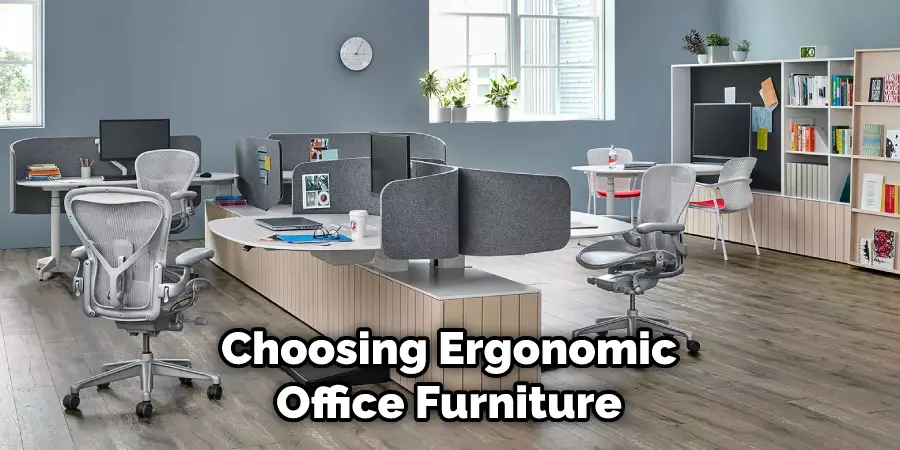
Consider investing in an adjustable desk and ergonomic chair to ensure that staff can always find the best fit for their body. This can be especially important during long workdays.
Additionally, encourage staff to take regular breaks from their desks and incorporate stretches and other exercises into the day to reduce strain. Keeping ergonomics in mind when planning the office space can ensure staff are as comfortable and productive as possible.
8. Add Inspirational and Personal Touches:
Incorporating personalized and motivational elements, such as artwork, quotes, and personal achievements, can help create a positive and inspiring atmosphere. Hang up art that you enjoy and displays your personal style. Place quotes and meaningful messages on walls, bulletin boards, or whiteboards.
Celebrate accomplishments by displaying awards and certificates. These touches will help remind you of why you work hard and stay committed to success. Although it’s important to keep the office space professional and organized, adding a few personal items can make it feel more inviting and welcoming.
9. Implement Technology and Connectivity:
A reliable and efficient technological setup can help streamline tasks and enhance productivity. Planning for necessary electrical outlets and power sources, concealing cables and wires, setting up a reliable Wi-Fi network, and integrating smart devices can all contribute to a functional and modern workspace.
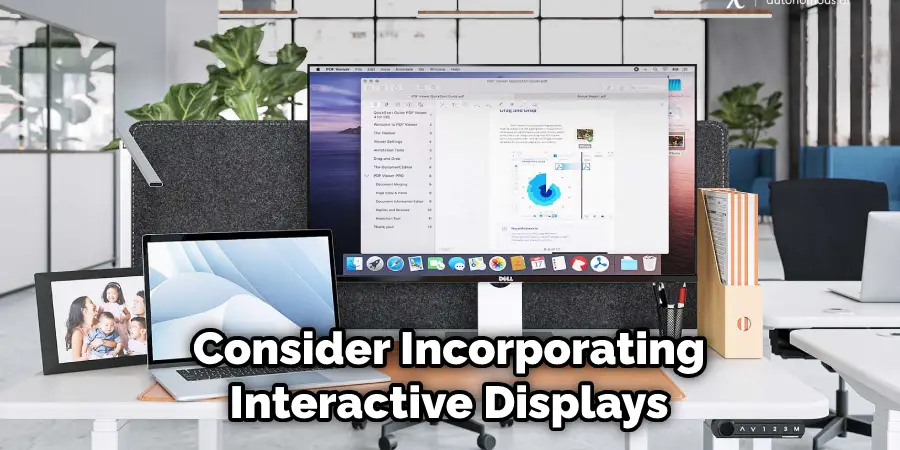
Consider incorporating interactive displays and touchscreen technologies to make meetings and presentations more engaging. Connectivity is key, so incorporate robust networking systems to support video conferencing and cloud computing.
Enhance the office space with automation, allowing for efficient control of lights and climate in multiple areas. The addition of technology will also enable telecommuting, remote work, and collaborative projects from anywhere.
10. Enhance Acoustics and Privacy:
Acoustics and privacy can have a significant impact on concentration and productivity. Utilizing sound-absorbing materials, installing acoustic panels or curtains, and creating designated quiet zones or private areas can help reduce noise and distractions.
Consider also adding sound masking or white noise machines that help to reduce distractions from noisy environments. Additionally, be sure to add appropriate signage for quiet zones and private areas to ensure that everyone respects the designated spaces.
When it comes to planning out office space, acoustics, and privacy are key. With the right materials and design, you can create a comfortable yet productive working environment.
Some Common Mistakes When Decorating Office Space
1. Too Much Clutter and Disorganization.
Clutter can make a space look overwhelming, confusing, and unprofessional – not the atmosphere you want in your office. Make sure to organize and store papers, supplies, books, and other items neatly to create a more aesthetically pleasing space.
2. Poor Lighting.
Too much lighting, as well as too little, can be a major distraction for employees or clients visiting your office. Choose the perfect balance of light fixtures and window treatments to ensure plenty of natural and artificial illumination that is not too harsh on the eyes.
3. Not Personalising The Space Enough.
Personalizing your office space is key to creating an inviting atmosphere. Investing in items like artwork, plants, and furniture that reflect the unique style of your company can go a long way in making the space memorable.
4. Incorrect Colour Choice.

The color palette you select for your office should be considered carefully – it can be a major factor in creating the desired atmosphere. Bold, bright colors tend to be energizing and motivating, while softer shades are more calming and soothing. Choose a few complementary colors that fit within your company’s color scheme.
Conclusion
Decorating your office space is an important part of the work environment and can make all the difference in how comfortable you feel at work. Use the tips that have been outlined in this blog post to be able to create an office space that fits with your needs, allowing you both to enjoy and succeed.
Furthermore, never forget the impact lighting can have on an environment so make sure you choose a light fitting appropriate for true concentration. Finally, embrace color by bringing vibrant elements into every room which ultimately can help boost creativity!
Follow these pointers as an easy guide of how to decorate office space and be amazed with the transformation that takes place!

